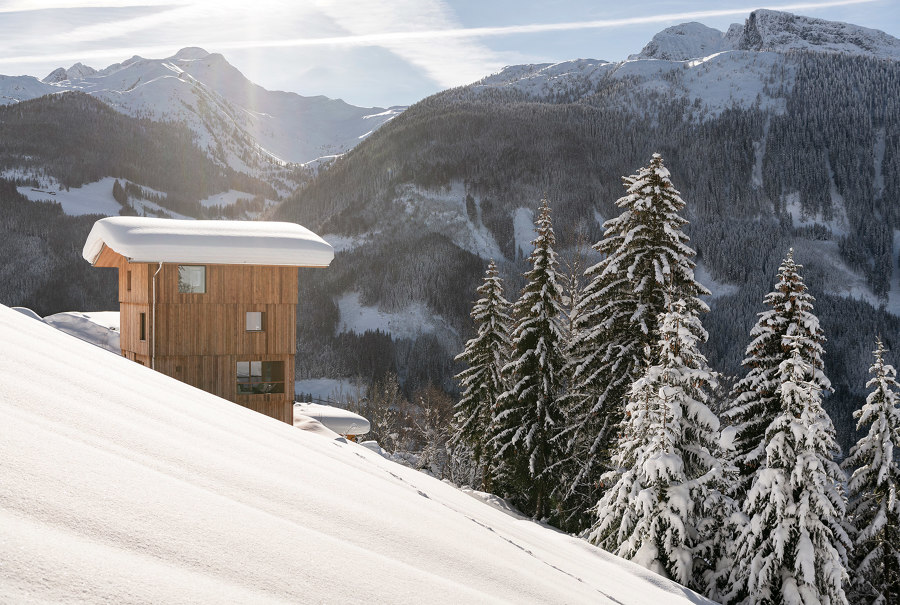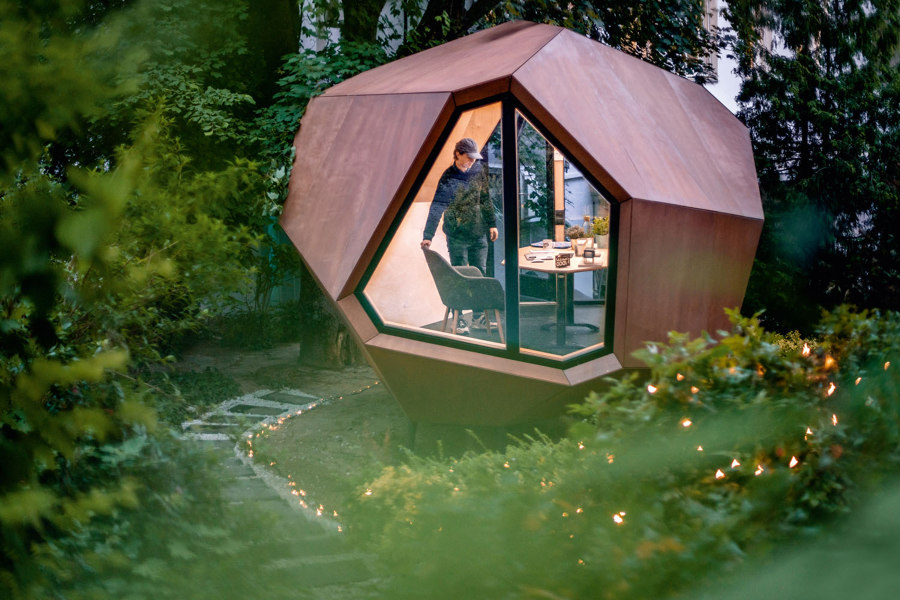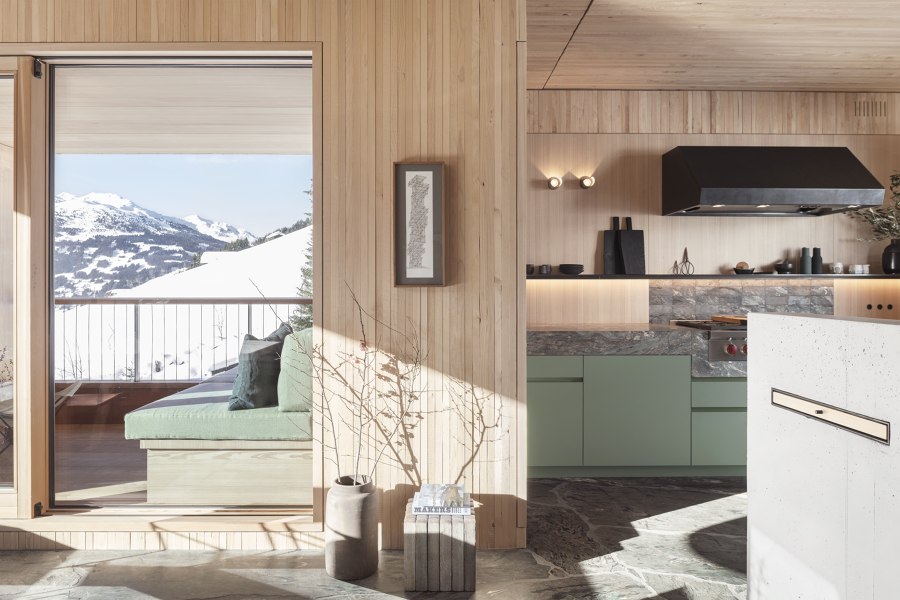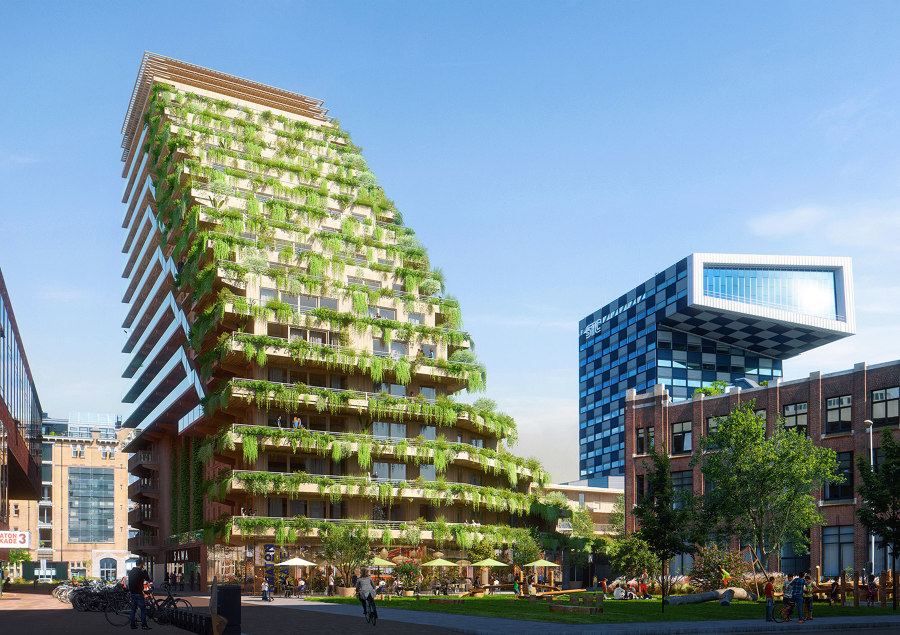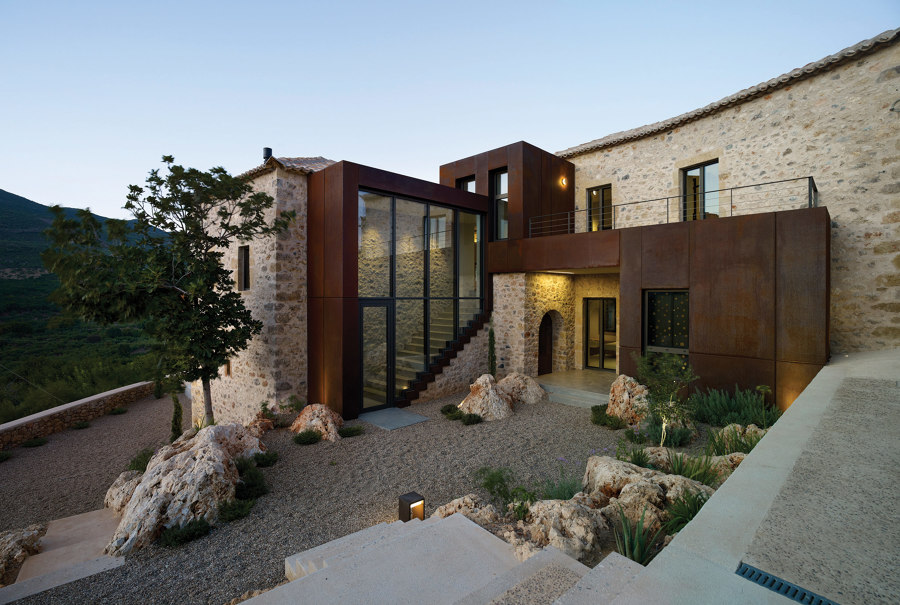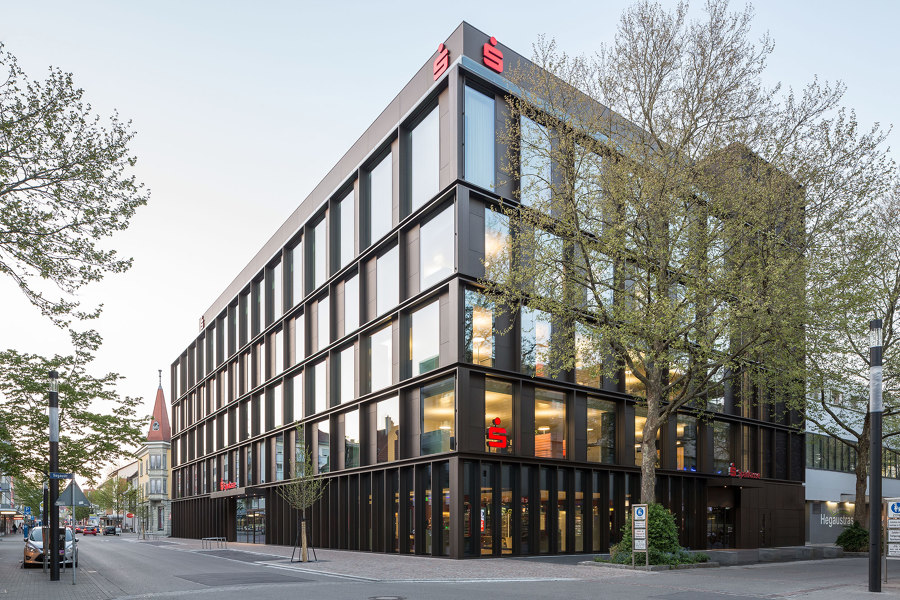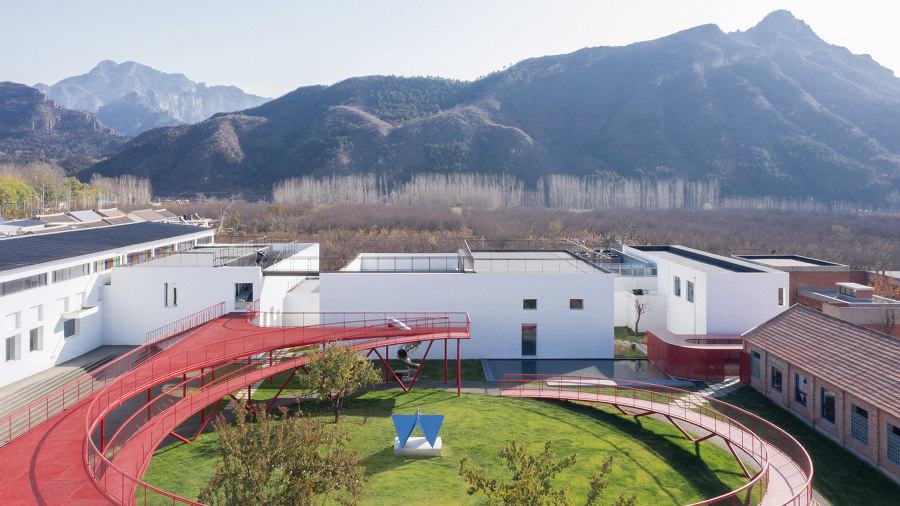Iconic Awards: Innovative Architecture – Trends 2021
Texte par Rat für Formgebung
Frankfurt am Main, Allemagne
13.10.21
The award honours the best architecture, interior architecture, product design and brand communication. For 2021, it has set two trends: wooden architecture and redevelopment.
Turmhaus Tirol, Zillertal, Austria. Photo: Oliver Jaist
Trend 1 – Wooden architecture for a carbon-neutral future
The European Union intends to be climate-neutral by 2050. This will require decarbonisation at every level of the economy, with the construction sector having a particularly key role to play. The sector accounts for around 40 per cent of CO2 emissions globally, and steel and concrete, in particular, take enormous amounts of energy to produce. There needs to be a paradigm shift to break free from these building materials and the associated environmental impact. Natural, renewable building materials play a crucial part in this.
Most notably, the eco-all-rounder wood is undergoing a real renaissance. Wooden architecture reduces the concentration of carbon dioxide in the atmosphere in several ways. Firstly, sustainably managed woods and forests play a key role in tackling the greenhouse effect by removing CO2 from the atmosphere. The wood used for architecture in turn provides further environmental protection as the raw material acts as a natural binder for the greenhouse gas that causes global warming and thus as a carbon store. As a renewable and also easily recyclable resource, it offers a compelling alternative to the mineral-based building materials that are currently used. Wood has been used as a building material for thousands of years, but the current trend for this material has little to do with traditional construction techniques. Computer-aided design programs and the use of high-tech construction and processing machines now enable precisely calculated structures. These engineering possibilities minimise the use of materials and also open up entirely new aesthetic avenues. Architects are making bold progress here and are actively helping to shape a carbon-neutral future.
This trend is reflected in the winning projects of the ICONIC AWARDS: Innovative Architecture 2021. Here are some examples:
Workstation cabin, Budapest, Hungary. Photo: Hello Wood
The wooden Workstation from Hello Wood Studios is a modular mini room that is quick to construct and enables flexible use. The project was awarded as “winner”.
Turmhaus Tirol, Zillertal, Austria. Photo: Oliver Jaist
Turmhaus Tirol in Zillertal, Austria, is an outstanding example of how traditional regional construction and elegant modern architecture can combine perfectly to form an harmonious whole. Grünecker Reichelt Architekten and holzrausch were awarded Best of Best.
Sawa residential tower, Rotterdam, the Netherlands. Photo: WAX+Mei architects
Cross-laminated timber was used to construct the Sawa residential tower in Rotterdam, designed by Mei architects and planners. They were awarded “Selection”.
Trend 2 – Conversion, adaptive reuse and urban mining for the environmental transition
Questions about what sustainability means also inevitably discuss social values. One such value is the newness of a product or object. This has so far been seen as an achievement, per se. This notion is particularly problematic in the construction industry, where it leads to widespread demolition of existing structures that must make way for new, supposedly better buildings. A whole series of major modern structures from the post-war period, which once symbolised a generation’s spirit of optimism, are now up for consideration. From an environmental perspective in particular, the principle of demolishing and rebuilding is now no longer productive in many cases, as this goes hand in hand with an enormous waste of energy and building materials such as concrete and steel, which are difficult to recycle.
However, a change in thinking is now underway. Buildings are being redeveloped, renovated and extended with architectural interventions to meet modern-day needs. There is new concern emerging for what already exists. Urban mining, which involves using existing building stock as the raw material for new buildings, has become highly popular. And, importantly, the European Commission published its Renovation Wave strategy as part of the Green Deal in autumn 2020. This aims to encourage major upgrades in the energy performance of public and private buildings.
Reusing existing structures is no longer a niche area – it has become a phenomenon that can be observed around the world. This can also be seen in the winning projects at the ICONIC AWARDS: Innovative Architecture 2021:
Rusted Mill House, Kardamyli, Greece. Photo: DETALE Architecture and Engineering
Rusted Mill House in Kardamyli (Greece) by Detale Architecture and Engineering is a restored 1850s farmhouse uniquely fitted with a traditional olive mill preserved at its centre. The project was awarded with “Selection”.
Sparkasse bank headquarters, Bregenz, Austria. Photo: HANSPETER SCHIESS FOTOGRAFIE
GMS Architekten has revitalised the Sparkasse bank headquarters by redesigning the façades. The new look now makes harmonious references to the diverse architecture in the area. They were awarded as “Winner”.
Youth Activity Center, Beijing, China. Photo: Xi Zhi
Moguang Studio has transformed a former garment factory in Beizhuang into a Youth activity centre. The project was awarded as “Winner”.
© Architonic

